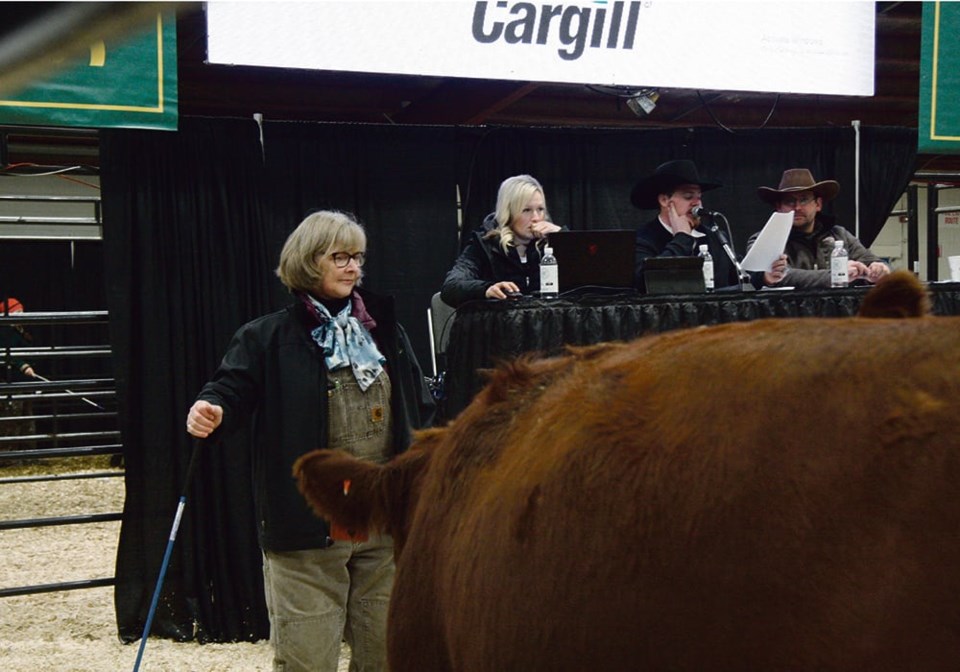REGINA — The commercial cattle sale at Canadian Western Agribition in Regina isn’t as large as it used to be, but it still draws a good crowd and sends a price signal.
The final cattle sale of the show saw 168 head of open and bred heifers sell for just shy of $400,000.
Bred heifers averaged $2,565 on 117 head, while open replacements averaged $1,884.
The high selling lot of bred heifers was a pen of five consigned by Blairswest Land and Cattle at Drake, Sask. They sold for $4,500 each to Dennis Metz of Lumsden.
The top selling open lot was a pen of three from Bridgeway Livestock at Wawota, Sask., which sold for $3,333 each to Emde Land and Cattle Corp. at Midale, Sask.
June and Arlie Mebs, from Mebs Ranch at Broadview, Sask., are long-time consignors to the sale.
“This sets the tone because of the very good quality here,” said Arlie of the commercial sale. “This is the meeting place for progressive thinking.”
They entered two pens of five bred heifers in the show and sale. One sold for $4,000 per animal and the other for $2,500. The heifers should calve in January or February.
June said she began showing her commercial cattle at Agribition because she used to work in the purebred barns.
“I came over to this barn all the time,” she recalled.
She can’t recall how many years she has been showing but says it’s the people who bring her back.
“This is June’s deal,” said Arlie, sweeping his arm to indicate the commercial barn at the show.
The couple, along with their son, calve out about 300 Simmental-Red Angus cows. They are Verified Beef Production Plus certified and sell off the farm.
Both June and Arlie are worried about the future of the cattle industry in general. Aging farmers aren’t being replaced, although they noted that their children are all farming.
There are three large seedstock dispersals in southeastern Saskatchewan this fall and commercial dispersals as well.
“Who is going to buy all those cows and raise bulls for us?” said June. “We need the purebred industry and they need us.”
“There is a lot of pessimism,” said Arlie. “Feed costs can be so high and the cost of raising a calf goes up.”
Pasture conversion into cropland and land access are also issues as the grain sector is willing to pay higher land rent than many cattle producers.
June said the past year was tough after drought and then an “April from hell” that saw people in the region, including them, lose animals in huge snowstorms.
Still, they continue with the help of their son, whose family lives in the same yard. June said showing at Agribition is an opportunity to display their program to buyers who want good heifers. They were also able to bring two granddaughters to the event, held Nov. 28 to Dec. 3, who may catch the show bug for the future.
They remember when the commercial barn was packed with hundreds of cattle and said they will continue to support the annual event.
June credits their good fortune at the sale to their red females.
“They are so good when crossed with a terminal breed like a Charolais,” she said. “You get those tan calves that top the market.”

